The National Park System is one of America’s most important natural treasures. Each year, hundreds of millions of visitors flock to the parks for their recreational opportunities, historical significance, and majestic scenery. The most popular parks are also home to some of the country’s most iconic natural attractions, such as Yellowstone’s Grand Prismatic Spring and Yosemite’s ancient giant sequoia trees. Along with the well-trodden sights, there are some overlooked marvels in the national parks, too. Check out our picks for the single best thing to see in the 10 most popular U.S. national parks.
Big Bend – Glacier National Park, Montana
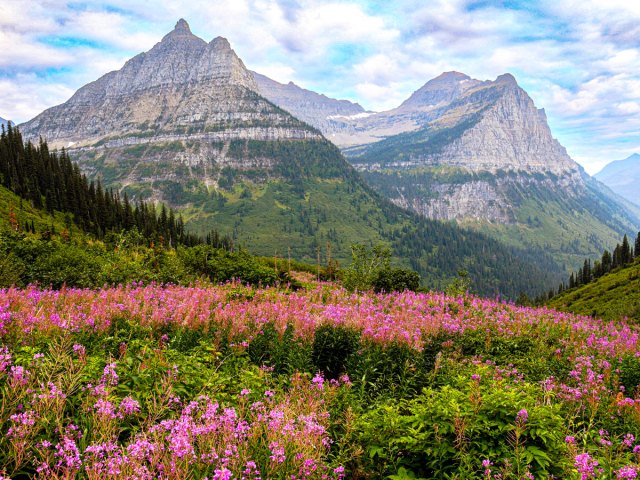
For many, the highlight of Glacier National Park’s Going-to-the-Sun Road — one of the most scenic drives in the U.S. — is the spot known as Big Bend. The sweeping curve in the road is located just before Logan Pass, the highest elevation reachable by car in the park. Big Bend is renowned for its Lake McDonald Valley vistas and its spectacular sunset views, set against Mount Oberlin, Mount Canon, and Heavens Peak. If you visit in the mid-summer, you might even be lucky enough to take in the meadows of vibrant wildflowers.
The Ledges – Cuyahoga Valley National Park, Ohio
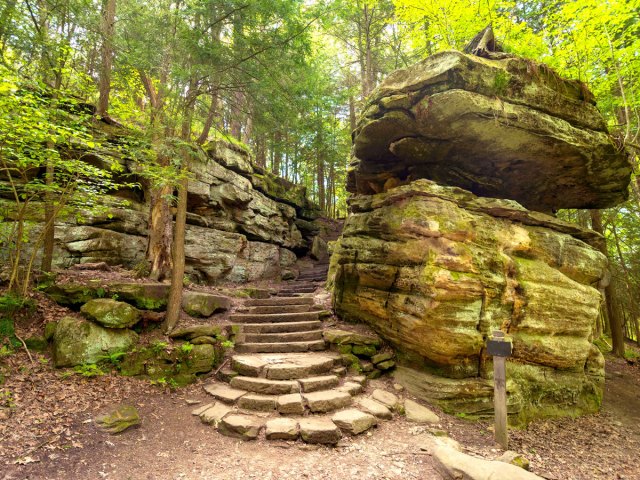
The Ledges (also known as the Ritchie Ledges) are remnants from when Ohio was covered in a tropical ocean millions of years ago. The striking rock formations are made up of a unique regional geological formation known as the Sharon Conglomerate — a sedimentary composition of many rock fragments, including white quartz pebbles, cemented together with sand and mud. The moss-covered cliffs of the Ledges create dozens of narrow pathways and alcoves to explore. Signs of the Ledges’ history are located along the trail, along with remnants of old waterways and honeycomb-like weathering in the rockface. The Ledges also feature the Ice Box Cave, a cavern located 50 feet underground and aptly named for its cool year-round temperature.
Cholla Cactus Garden – Joshua Tree National Park, California
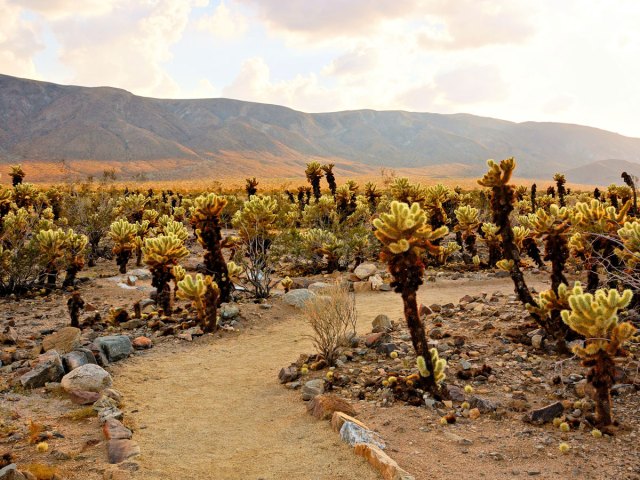
It’s difficult to choose just one standout feature among the otherworldly landscape of Joshua Tree, but the Cholla Cactus Garden might just be the most captivating natural attraction of the Southern California national park. The area is known for its dense concentration of cholla cacti. These tight clusters of small, spiky spines appear fuzzy — hence their other name, the teddy-bear cholla. Visitors can enjoy the cactus garden by walking a short loop trail that showcases not only the teddy-bear cacti, but also desert lavender, Starvine, and forget-me-nots. It’s important not to get close to the Chollas, though — despite their cuddly name, their sharp barbs can easily detach and cling to passersby, earning them the nickname “jumping cholla.”
Grand Prismatic Spring – Yellowstone National Park, Wyoming
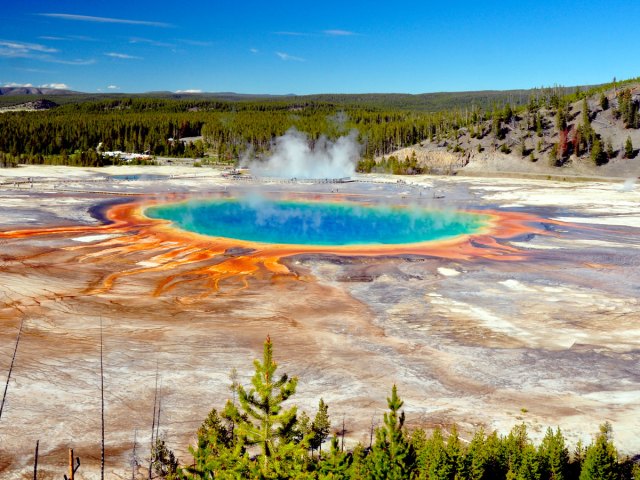
It’s one of the most popular attractions in the park for a reason: Yellowstone’s Grand Prismatic Spring is a vivid pool of turquoise water surrounded by vibrant orange, brown, and green colored rings — the result of microorganisms known as thermophiles which thrive in the near-boiling water. The spring is certainly not hard to spot, either. At 370 feet in diameter, Grand Prismatic is the third-largest spring in the world, measuring larger than a football field. Its hot temperature and cooler ambient air also mean it’s often releasing an ethereal steam that makes it look even more like something out of a sci-fi scene.
The Grizzly Giant – Yosemite National Park, California
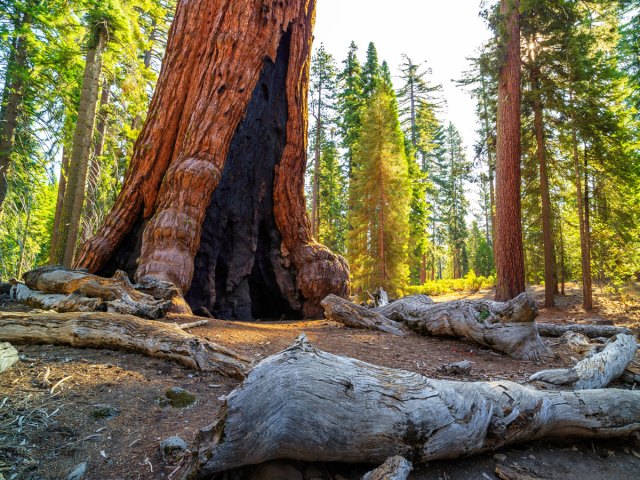
Yosemite National Park is home to three ancient Sequoia tree groves. The Mariposa Grove, located in the southern part of the park, is the largest and is home to over 500 mature giant sequoias. The undeniable star of the show is the Grizzly Giant. Estimated to be about 3,000 years old, the tree towers over 200 feet tall, with branches that reach a diameter of six feet. Not only is it the second-oldest tree in the park, but the Grizzly also holds a special charm: In 1903, President Theodore Roosevelt spent a night camping under the giant — an excursion that is said to have helped inspire his legacy of conservation.
Sand Beach – Acadia National Park, Maine
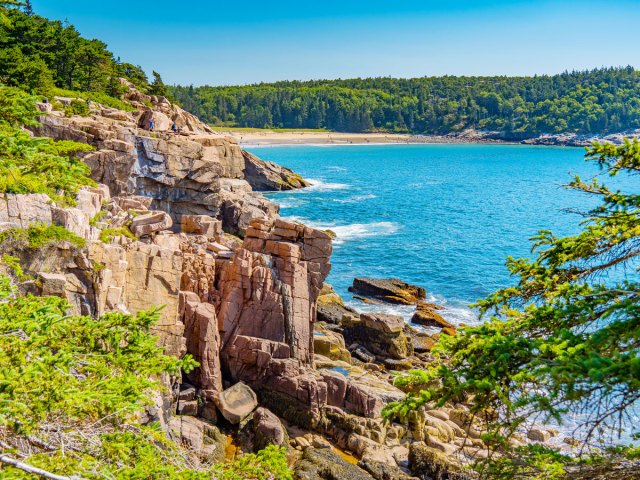
Located on the east side of Mount Desert Island in Acadia National Park, Sand Beach is a small but stunning stretch of coastline, popular for its shell-strewn shore nestled between rocky cliffs. The real magic happens after dark, when the sandy beach becomes an ideal viewing location for stargazing. The park boasts the largest expanse of dark sky east of the Mississippi River. Its south-facing view over Newport Cove has unobstructed views and minimal light pollution, and if you visit in July or August, you have a pretty good chance of clearly seeing the Milky Way.
Wild Elk Population – Rocky Mountain National Park, Colorado
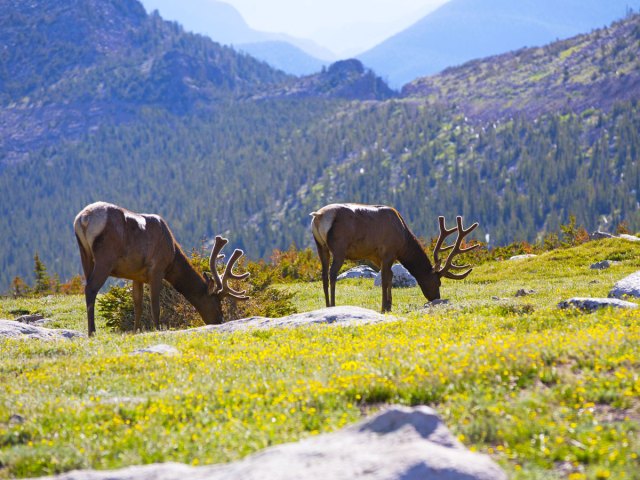
There’s no shortage of stunning landforms in Colorado’s Rocky Mountain National Park, but one of the most thrilling experiences is spotting the abundant elk population. Several areas in the park are known for elk sightings: the meadows of Moraine Park, the flat lands of Horseshoe Park, and the Kawuneeche Valley (where you might even spot some moose, too). Elk are more likely to be active at dawn or dusk, particularly during the fall mating season in September and October. Of course, it’s crucial to maintain a safe and respectful distance from the animals — some of them stand five feet tall at their shoulders and can weigh several hundred pounds.
The Narrows – Zion National Park, Utah
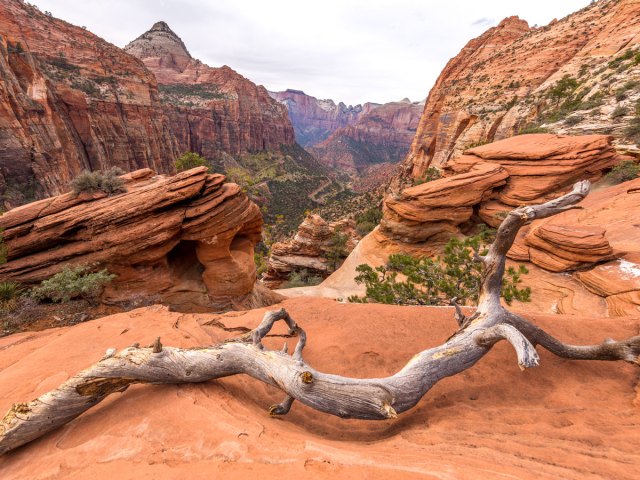
It’s one thing to see the awe-inspiring photos of rock formations in Zion National Park — but it’s a whole other experience to get up close and personal with them. A hike through the Narrows will take you through a canyon of small and — you guessed it — narrow paths, where you’ll be surrounded by Navajo sandstone walls that reach over a thousand feet tall. An excursion through the Narrows also involves wading through Utah’s Virgin River, another unique experience of the area’s stunning geology.
Hopi Point – Grand Canyon National Park, Arizona

The Grand Canyon welcomes some 6 million visitors every year, and many of them head to one of the best lookouts in the park: Hopi Point. This spot offers spectacular panoramic views of the deep and ancient canyon. Protruding further out into the canyon than any of the other South Rim overlooks, Hopi Point offers one of the clearest views of the canyon’s vastness and its intricate geological makeup, shaped over millions of years. The west-facing lookout is particularly popular at sunset. Hopi Point is only accessible by shuttle, and there will likely be a lengthy wait to leave after the sun goes down — but trust us, it’s worth sticking around.
Synchronous Fireflies – Great Smoky Mountains National Park, North Carolina, and Tennessee

For a brief period each year, typically in late May to early June, thousands of Photinus carolinus fireflies — also known as synchronous fireflies — gather in the Great Smoky Mountains National Park and synchronize their flashing patterns. The bioluminescent light show, part of the fireflies’ mating practice, typically lasts for two to three weeks and makes for a magical spectacle that is a highly sought-after experience. The park conducts a lottery system for parking passes to manage the crowd and preserve the delicate ecosystem.
More from our network
Daily Passport is part of Optimism, which publishes content that uplifts, informs, and inspires.























